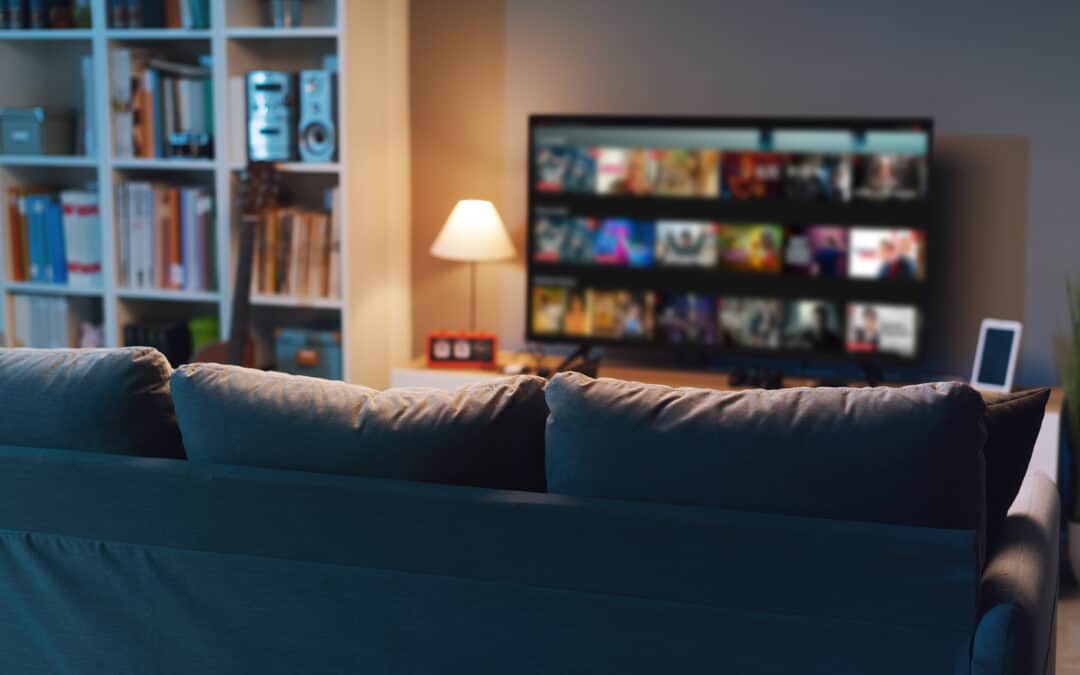Home theaters bring the excitement of movies to your home. You might wonder – how small is too small for a home theater? Why spend a ton of money when you could entertain people in a room? If you don’t have much space, it can be tricky to create a home theater.
At least twenty by twenty feet is ideal, but anything too small to at least hold people and a television is too small for a home theater space. There should also be at least two feet of space between people, televisions, and speakers for the safest and most effective viewing experience.
If you’re interested in learning more about the proper size for a home theater, you’ve come to the right place. Read on to learn more about the ideal size for a home theater, how small one can be, and the best dimensions for acoustics. The more you know, the easier it will be to create your dream entertaining area.
Table of Contents
What Is the Ideal Size For a Home Theater?
Although a home theater is what you make it to be, the ideal size for a theater is forty by forty feet. This size permits the best sound and visual quality for your space, allowing room for plenty of people to gather and watch entertainment. If you have a large entertainment room, you have more room for functionality.
The ideal size for a home theater will have space for the following:
- Multiple people to lounge comfortably
- A large and effective screen
- Sofas and other furniture
- Effective sound equipment
These will provide the best experience as you watch your favorite forms of entertainment.
Of course, most people don’t have spare forty-by-forty feet rooms in their homes. Although you should aim for this size, it’s possible to go smaller. What is the smallest size a home theater can be before it becomes too tiny to provide a quality entertainment-viewing experience? What is the smallest you can go?
How Small Can A Home Theater Be?
Ideally, the smallest home theater would be no less than twenty by twenty feet. However, most houses have an average home theater size of twenty by fifteen feet. This size comes to around three-hundred square feet, large enough for enjoyment yet not so big it takes up the entire home.
The larger your home theater, the easier it will be to create space between the seats. Ideally, twenty inches is the perfect spacing for your sitting spots. In a smaller theater, you may have to shrink that spacing to about a foot.
We’ve discussed the ideal size for a home theater, which works best for spacing and screen purposes. What about the acoustics? What is the proper size for adequate acoustics in your theater?
What Are the Ideal Dimensions For Acoustics?
It’s vital to consider the speaker-to-room size ratio when designing your home theater. The best audio design is to consider the golden ratio. Optimal sound comes in a room with a width of 1.6 times the height and a length of 2.6 times the height.
It’s tricky to hit the golden ratio perfectly. However, get as close to it as possible for the best sound in your home theater. Room shape is also a factor.
What Shape Room Is Best For Sound?
There’s a misconception out there that the traditional rectangle shape of a movie theater is not the ideal structure. Some think domes or circles are a better option for a home theater. What’s the proper form for your home theater’s sound?
You don’t need extreme changes to your room for the best sound. A rectangle is ideal because it has the best potential for bass reproduction. Don’t make your room square or irregular.
Final Thoughts On What Is Too Small For A Home Theater
How small is too small for a home theater? If you have a sofa, a sound system, and technology to watch something on that can fit in the room, it’s large enough to be a home theater. However, it is critical to remember that quality decreases with size. The ideal home theater is at least forty-by-forty feet, twenty-by-twenty at the smallest, for the perfect viewing experience.
We hope this information was helpful! If you have determined a home theater room is worth it and you’re going to spend time and money creating a home theater, it’s vital to ensure the space is large enough.
It might take a little trial and error to determine how far you need to be away from the screen and sound for the best viewing process. The more you know, the better prepared you will be to create your incredible room.
